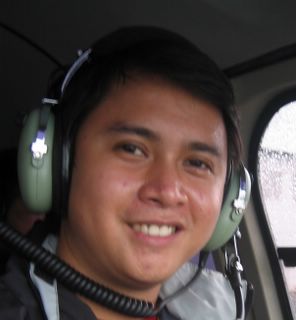The Abu Sayyaf Did This
“Baboy…baboy ang ginawa nila sa mga pinsan ko,” says a teary-eyed Felix Basilio who had two cousins among the seven men beheaded by the Abu Sayyaf last Thursday, April 19. Basilio and other relatives of the hostages could not hold back their emotions as they saw the flat-bed truck carrying the bodies of the victims enter the Camp Asturias Hospital in Jolo, Sulu.
The victims were hogtied when their decapitated bodies were found scattered in the town of Parang where they were abducted. Their heads were recovered on Army detachments in the towns of Parang and Indanan a day before.
Before the news of the beheadings broke out, families of the kidnapped men in Zamboanga City aired their disgust over the seeming inaction of the government on the incident. Three days after the kidnapping, the families said there were no government officials coordinating with them nor updating them on the status of the negotiations. At this time, the families in Zamboanga City had no idea that in Sulu, news of the beheadings had already circulated.
My team and Jun Veneracion’s of GMA 7 decided to coordinate with the Indanan police to see if there are efforts to recover the decapitated bodies. From the Indanan police station, we motored to the boundary of Indanan and Parang where the Abu Sayyaf reportedly executed their victims. After around 15 minutes, we were flagged down by Army soldiers and I thought we had to start our long trek on foot. Then we saw the grisly images of the seven decapitated bodies lying at the back of the flat-bed truck which was also flagged down at the checkpoint. The bodies were collected by authorities and civilians in Parang and were ordered by the town mayor transported to the capital town of Jolo.
A five million peso ransom was demanded by the group of Abu Sayyaf leader Albader Parad. It was not really clear if the ransom was being asked from Sulu Gov. Ben Loong who hired six of the victims from Zamboanga City in his construction firm in Sulu, or if the ransom was demanded from the families of the victims. Some say the ransom demand was obviously directed to the governor.
But of course, the policy of the government is clear – no ransom should be paid. The families of the victims cannot afford to pay 5 million pesos either, especially since Loong admitted he is paying his six workers around 150 pesos a day each. The last resort was for the governor to issue a public appeal in behalf of the families, but to no avail.
The victims clearly were innocent. Even Muslim religious leaders all over Mindanao condemned the Abu Sayyaf for the killings. The six employees came from Zamboanga City hoping they can find a decent living in Sulu by working in construction projects in the island. Some of them relocated to Sulu with their family members. One of them, sixteen-year-old Louie Teodoro was just on an on-the-job training for the summer vacation. These men knew they were treading on Abu Sayyaf territory but they had no idea they would eventually become the next targets of the bandits pretending to be rebels with a cause.
I was hoping the war with the Abu Sayyaf was about to reach its end after the reported deaths of its high-ranking leaders Khaddafy Janjalani and Abu Sulaiman. I thought government forces would eventually kill or capture the remaining leaders of the group. For a while, the Abu Sayyaf kept quiet after the deaths of their leaders. My team and I did not actually expect that we would be covering this gruesome beheadings. We went to Sulu because of the military offensives against the group of Moro National Liberation Front leader Ustadz Habier Malik who had launched jihad or holy war against the government. Until the Abu Sayyaf once again made their presence felt.
Now that fear has settled once again in most communities in Sulu, the war is definitely far from over. Add to that, the elections is just a few weeks from now in this Southern province always considered to be a political hotspot by the Commission on Elections.




